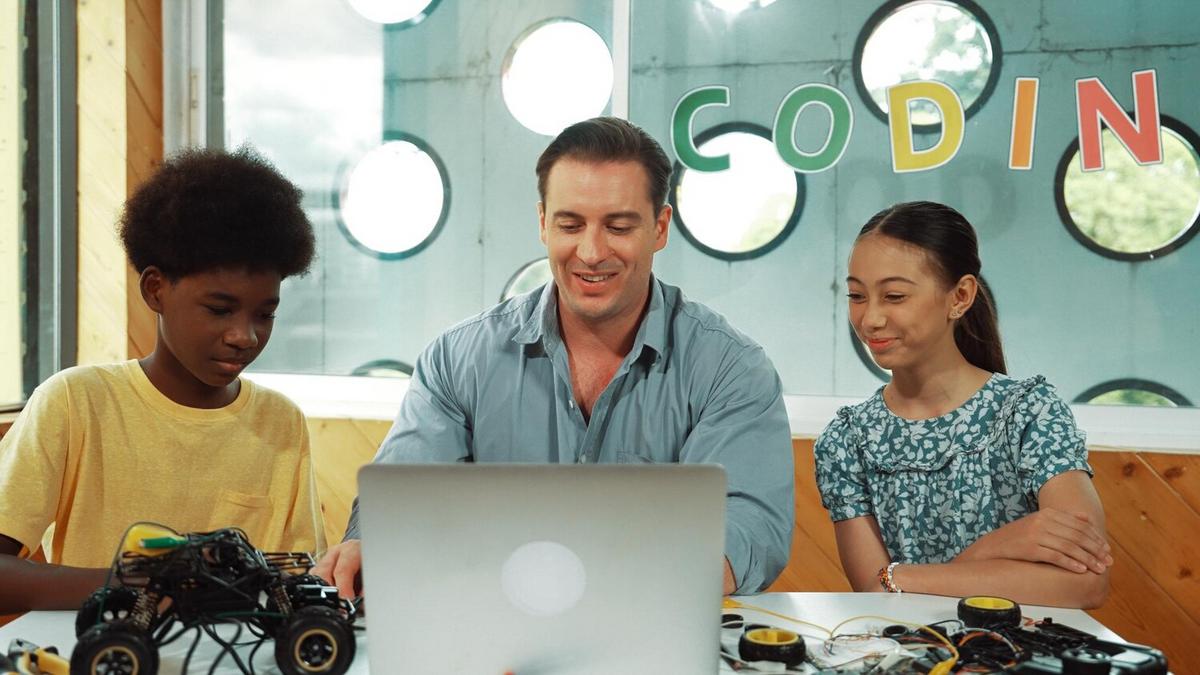The shift towards Open Educational Resources (OER) in public schools marks a significant evolution in educational policy, promising to democratize access to quality learning materials and foster a more inclusive learning environment.
The movement towards Open Educational Resources (OER) in public schools is gaining momentum, driven by the need for equitable access to quality education and the desire to leverage technology for better learning outcomes. OERs are freely accessible, openly licensed text, media, and other digital assets that are useful for teaching, learning, and research. Let’s explore the dynamics of this movement and its implications for public education.
Why Open Educational Resources Matter
Open Educational Resources are transforming the educational landscape by providing free and adaptable learning materials. According to the Organization for Economic Co-operation and Development (OECD), OERs help eliminate barriers to education by reducing costs and promoting educational equity. This is particularly crucial for underfunded schools where budgets for textbooks and resources are limited.
Expert Insights
Dr. Lisa Petrides, founder of the Institute for the Study of Knowledge Management in Education, emphasizes, “OERs are not just about saving costs but about reshaping how education is delivered, making it more collaborative and adaptable to student needs.” Her insights highlight the transformative potential of OERs beyond financial considerations.
Impactful Statistics
A study by the Babson Survey Research Group found that over 60% of faculty members are aware of OERs, with many acknowledging their potential to enhance learning. Furthermore, schools implementing OERs have reported an improvement in student engagement and academic performance.
Real-World Application
Consider the example of a public school district in California, which adopted OERs to replace traditional textbooks. The district reported substantial cost savings, which were redirected to support technology initiatives and teacher training, ultimately enriching the educational experience for students.
How to Implement OERs in Schools
- Start Small: Begin with pilot programs in specific subjects to evaluate effectiveness and gather feedback.
- Engage Educators: Provide professional development for teachers to effectively integrate OERs into their curricula.
- Collaborate: Partner with other schools and districts to share resources and best practices.
Pro Tip: Leverage online platforms and communities dedicated to OERs to find high-quality resources and connect with educators worldwide.
Comparing Traditional Resources with OERs
| Aspect | Traditional Resources | Open Educational Resources |
|---|---|---|
| Cost | High | Low to Free |
| Accessibility | Limited | Wide |
| Adaptability | Rigid | Flexible |
| Collaboration | Limited | Encouraged |
| Updating | Infrequent | Frequent |
| Student Engagement | Variable | High |
| Teacher Support | Standard | Enhanced |
| Innovation | Slow | Rapid |
FAQs on Open Educational Resources
What are Open Educational Resources?
Open Educational Resources are teaching, learning, and research materials that are freely accessible and openly licensed for anyone to use.
How can OERs benefit students?
OERs can reduce educational costs, provide up-to-date materials, and enhance student engagement through more interactive content.
Are OERs reliable?
Yes, many OERs are peer-reviewed and created by reputable educators and institutions.
Conclusion
The movement towards Open Educational Resources in public schools is not just a trend, but a necessary step towards equitable and innovative education. By embracing OERs, schools can enhance learning experiences, reduce costs, and prepare students for a dynamic world. As educators and policymakers work together, the potential for OERs to revolutionize education becomes increasingly attainable. Engage with this movement, explore available resources, and consider how OERs can be integrated into your educational setting for maximum impact.




Leave a Reply